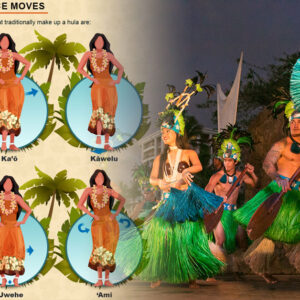Immerse yourself in the rich cultural heritage of Hawaii by experiencing a traditional Hawaiian hula dance. This captivating art form, rooted in storytelling and graceful movements, offers a glimpse into the history and traditions of the islands. Whether you witness a performance by local dancers, participate in a hula workshop, or explore the ancient hula sites, each avenue promises to transport you to a world of aloha and authentic Hawaiian spirit.
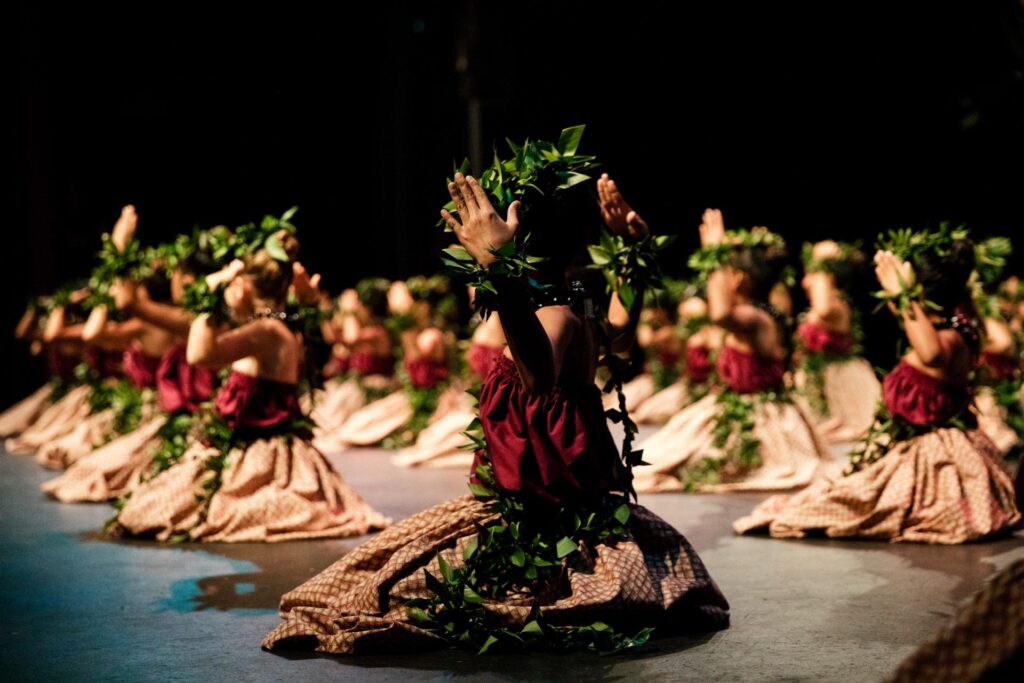
Choosing the Right Location
Beachfront Resorts
When it comes to experiencing a traditional Hawaiian hula dance, choosing the right location can greatly enhance your overall experience. Beachfront resorts provide a stunning backdrop for hula performances, combining the beauty of the ocean with the grace and elegance of the dancers. These resorts often host regular hula events, allowing guests to immerse themselves in the rich cultural heritage of Hawaii while enjoying the luxurious amenities of the resort. With the soothing sounds of the waves and the soft sand beneath your feet, you can truly transport yourself to the heart of Hawaiian culture.
Cultural Centers
Another excellent option for experiencing a traditional hula dance is to visit cultural centers. These centers are dedicated to preserving and promoting Hawaiian culture and offer a wealth of knowledge and experiences for visitors. Many cultural centers have their own hālau, or hula schools, where you can witness authentic hula performances by skilled dancers who have dedicated their lives to mastering this art form. In addition to the performances, cultural centers often offer workshops and classes where you can learn the basic moves of hula and gain a deeper understanding of its history and meaning.
Local Festivals
Attending local festivals is a fantastic way to experience the vibrancy and energy of traditional hula dancing. These festivals celebrate Hawaiian culture in all its forms, with hula performances being a central highlight. From the large-scale events like the Merrie Monarch Festival on the Big Island to smaller, community-based festivals, there are numerous opportunities throughout the year to witness captivating hula performances. Local festivals also provide a chance to engage with the local community, try traditional Hawaiian cuisine, and explore various art and craft vendors who showcase their work inspired by hula.
Finding Authentic Performances
Researching Local Hālau
To ensure you witness an authentic and high-quality hula performance, it is essential to research and find reputable hālau in the area you plan on visiting. Hālau are hula schools led by kumu hula, highly respected teachers of hula. These schools often perform publicly or participate in competitions, allowing you to experience firsthand the true essence of hula. By researching local hālau beforehand, you can discover their performance schedule and plan your visit accordingly, ensuring that you don’t miss out on an opportunity to witness their incredible artistry.
Attending Community Events
Keep an eye out for community events that feature hula performances. These events are often organized by local organizations or cultural groups and are an excellent opportunity to experience hula in a more intimate setting. Community events showcase the talent and dedication of local dancers and offer a chance to interact with them on a personal level. Attending these events not only allows you to appreciate the beauty of hula but also supports the local community by contributing to the preservation of Hawaiian culture.
Seeking Recommendations
When in doubt, seeking recommendations from locals or other travelers who have experienced traditional hula dances can be incredibly helpful. Locals are often proud of their cultural heritage and are more than willing to share information about hālau or upcoming performances. By asking for recommendations, you can tap into their knowledge and gain insights into the best places to witness hula performances that truly capture the spirit of Hawaii. Additionally, fellow travelers who have already experienced hula dances can provide valuable insights and recommendations based on their personal experiences.
Explore Uncharted Hawaiian Destinations
Understanding the History and Meaning
The Origins of Hula
To fully appreciate and connect with the art of hula, it is essential to understand its origins. Hula dates back to ancient Hawaii and holds deep cultural significance. It was traditionally a way of passing down stories, legends, and history through dance and chant. Hula played a vital role in preserving Hawaiian culture and was often performed during religious ceremonies and celebrations. By learning about the origins of hula, you gain a deeper understanding of its cultural importance and can better appreciate the performances you witness.
Different Types of Hula
Hula can be divided into two main types: Hula Kahiko and Hula ‘Auana. Hula Kahiko is the ancient form of hula, characterized by traditional chants, instruments, and movements. It often tells stories of gods, ancestors, and nature. On the other hand, Hula ‘Auana is the modern form of hula, featuring contemporary music and movements while still honoring the traditional essence of hula. Understanding the differences between these two types of hula allows you to appreciate the nuances and variations within the art form and recognize the cultural heritage reflected in each performance.
Symbolism and Storytelling
Hula is not simply a series of dance moves; it is a form of storytelling and expression. Each movement in hula has meaning and symbolism, and through the combination of dance, chant, and music, performers tell captivating stories that transport audiences to different times and places. By understanding the symbolism and narratives behind the hula performances, you can better connect with the emotions and messages conveyed by the dancers. Pay attention to the subtle gestures, facial expressions, and overall choreography to fully appreciate the rich storytelling aspect of hula.
Learning the Basic Moves
Enroll in a Hula Class
If you’re truly captivated by hula and want to delve deeper into its practice, enrolling in a hula class is a fantastic option. Many hālau offer classes for both beginners and more advanced students. Learning the basic moves of hula under the guidance of experienced instructors not only allows you to develop a deeper appreciation for the art form but also provides a hands-on experience of the cultural and physical aspects of hula. As you progress in your hula journey, you’ll gain a greater understanding of the complexities and dedication required to master this beautiful dance.
Online Tutorials and Videos
For those unable to attend physical classes or simply seeking additional resources to complement their learning, online tutorials and videos can be a valuable tool. Many hula instructors and hālau offer instructional videos, allowing you to learn at your own pace from the comfort of your home. These videos often break down the basic moves, provide cultural context, and explain the significance of each movement. While nothing can replace the in-person experience of learning hula, online tutorials can offer a convenient and accessible way to begin your hula journey.
Attending Hula Workshops
Hula workshops provide a unique opportunity to learn from skilled hula practitioners and gain a deeper understanding of the art form. These workshops are often organized by experienced dancers or hula schools and may span several days or weeks. Attending a workshop allows you to immerse yourself in hula, learn from different kumu hula, and interact with fellow participants who share your passion for the dance. These intensive experiences can be transformative, offering a comprehensive hula education that goes beyond the basic moves and delves into the cultural and spiritual aspects of hula.
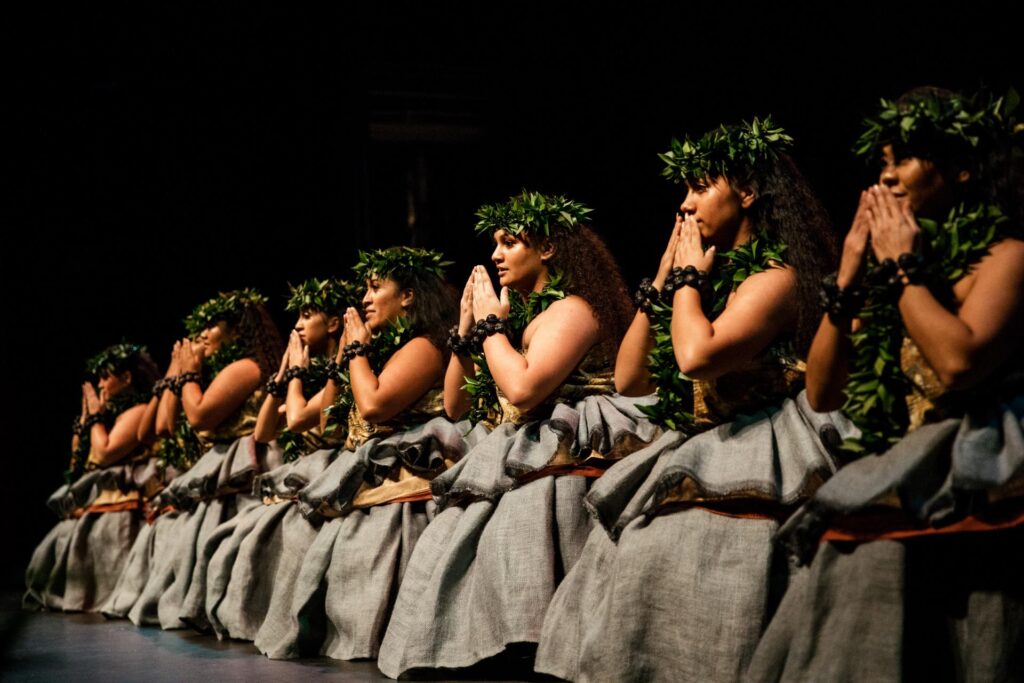
Plan Your Dream Hawaiian Getaway
Choosing the Right Attire
Traditional Attire
Choosing the appropriate attire when experiencing a traditional hula dance is essential to show respect for the culture and traditions of Hawaii. Traditional attire for hula performances typically includes a grass skirt, known as a pāʻū, for female dancers, and a malo, a type of loincloth, for male dancers. These garments are often made from natural materials like palm leaves or other native fibers. It is vital to dress modestly and in traditional attire to honor the history and cultural significance of hula.
Appropriate Footwear
When attending a hula performance, it is important to wear the appropriate footwear. As a spectator, comfortable shoes are recommended, as you may be standing or sitting for an extended period. However, it is common etiquette to remove your shoes before entering a hula performance area. This symbolizes respect and cleanliness, as the performance space is considered sacred. Be sure to bring socks or choose shoes that are easy to slip on and off to ensure you adhere to this cultural custom.
Accessories and Adornments
Accessories and adornments play a significant role in hula performances, particularly for the dancers themselves. Female dancers often wear lei, floral or plant garlands, around their necks or heads. These lei are symbolic of beauty, love, and friendship. Similarly, male dancers may wear traditional kihei, a draped cloth worn over one shoulder, often adorned with ornate patterns or colors. When attending a hula performance, you can also choose to wear a lei as a gesture of respect and to fully immerse yourself in the Hawaiian cultural experience.
Respecting the Cultural Etiquette
Arriving Early
One of the most important aspects of respecting cultural etiquette when attending a hula performance is arriving early. This allows you to familiarize yourself with the venue, find your seat, and prepare yourself for the experience to come. Additionally, arriving early shows respect for the performers and the sacred nature of hula. It demonstrates that you value their time and effort and are fully committed to immersing yourself in the cultural experience.
Switching Off Cell Phones
To fully appreciate and respect the hula performance, it is essential to switch off or silence your cell phone during the event. The sound of a ringing phone or the distraction of social media notifications can disrupt the atmosphere and detract from the beauty and focus of the hula performance. Keep your attention solely on the dancers and the captivating stories they are sharing through their movements and chants. By turning off your cell phone, you show respect for the performers and your fellow audience members.
Taking Photos and Videos
While it is tempting to capture the magic of a hula performance through photos and videos, it is important to be mindful of the cultural etiquette surrounding photography. Some hula performances may allow photography, while others may prohibit it. Before the performance begins, take note of any instructions or announcements regarding photography. If photography is permitted, be respectful and discreet, ensuring that your focus remains on the live performance rather than through the lens of your camera. Remember that the dancers may appreciate an engaged and present audience more than extensive documentation.
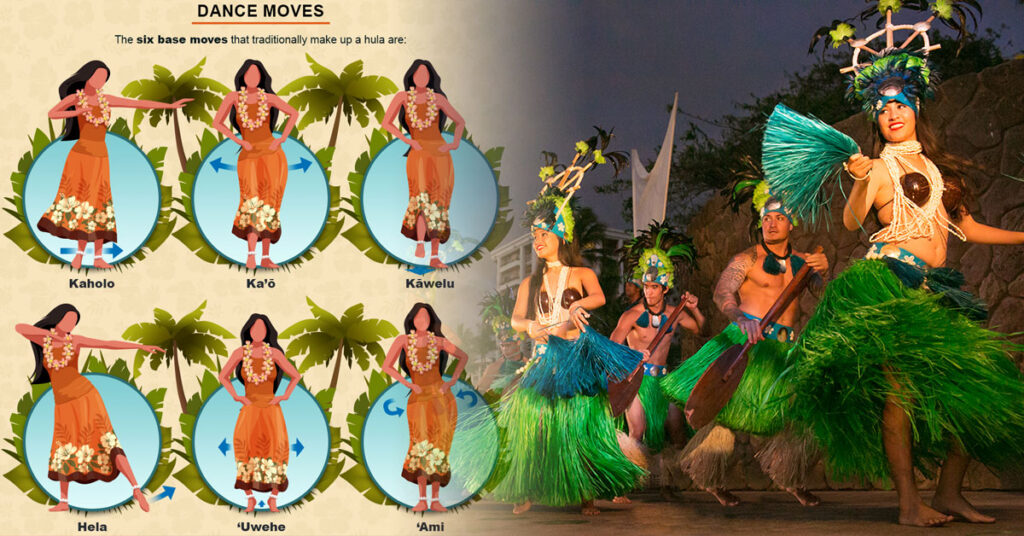
Experience Hawaii’s Unique Attractions
Being Mindful of Cultural Sensitivities
Avoiding Cultural Appropriation
Cultural appropriation is an important consideration to keep in mind when experiencing traditional hula dance. Avoid appropriating aspects of Hawaiian culture by respecting its origins, traditions, and protocols. This means refraining from using sacred or significant Hawaiian symbols, costumes, and chants without proper understanding or permission. Being mindful of cultural appropriation ensures that you appreciate and honor hula in a way that preserves its authenticity and respects the cultural heritage of Hawaii.
Understanding Sacred Elements
Hula performances often incorporate elements that hold significant spiritual or cultural value. These sacred elements may include specific chants, songs, or rituals. It is essential to approach these aspects with reverence and respect, recognizing their sacred nature. Avoid touching or interfering with any objects or instruments used in the performance unless explicitly invited to do so. By understanding and honoring the sacred elements, you contribute to the preservation and integrity of the hula tradition.
Being Respectful towards Dancers
When interacting with the dancers or performers, it is important to be respectful and considerate. While hula performances may evoke strong emotions and excitement, it is crucial to remember that the dancers are artists who have dedicated themselves to mastering this art form. It is respectful to refrain from excessive applause or disruptive behavior during the performance. After the performance, if there is an opportunity to meet the dancers, express your appreciation for their talent and the cultural experience they shared with you, but also be mindful of their personal space and time constraints.
Engaging with the Performance
Observe and Appreciate
One of the simplest yet most impactful ways to engage with a hula performance is to observe and appreciate the dancers’ movements and skill. Hula is a mesmerizing art form, and by watching closely, you can appreciate the subtle gestures, graceful footwork, and the overall synchronicity of the performance. Notice the emotions conveyed through the dancers’ facial expressions and the power of their storytelling through the combination of dance and chant. Immerse yourself in the performance, allowing the music and movements to transport you to the world of the hula.
Learn the Chants and Songs
To deepen your engagement and connection with hula performances, consider learning the chants and songs that accompany the dances. The chants and songs often carry historical or cultural significance, and by learning their words and melodies, you can gain a deeper understanding of the stories being told. Share in the experience by singing along softly, even if you do not understand every word. The more you familiarize yourself with the chants and songs, the more you can appreciate and actively participate in the performance.
Participate in Audience Interactions
In some hula performances, there may be opportunities for audience participation. This can range from simple hand gestures to joining in group chants or dances. Embrace these moments and participate to the best of your ability while being mindful of the boundaries and instructions provided by the performers. By actively engaging with the performance, you become an active participant in the celebration of Hawaiian culture and contribute to the overall energy and enjoyment of the event.
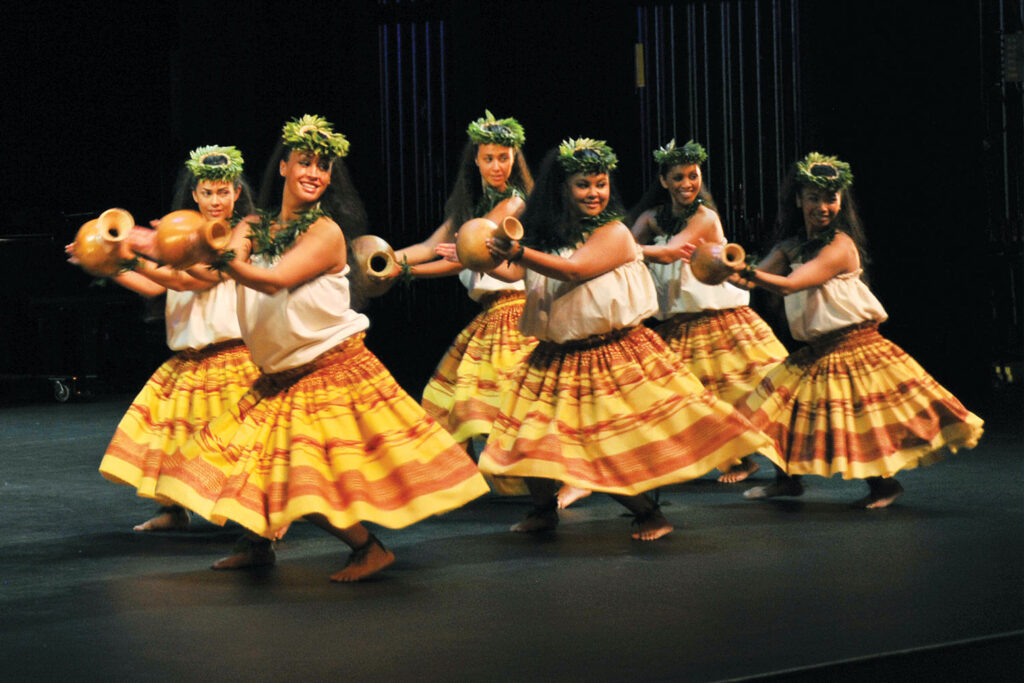
Supporting Local Artists and Communities
Purchasing Traditional Crafts
When attending hula performances or visiting cultural centers, you often have the opportunity to support local artists by purchasing traditional crafts. These crafts can include handwoven baskets, carved wooden sculptures, or intricately designed jewelry. By purchasing these crafts, you not only bring a piece of Hawaiian culture into your own life but also contribute to the economic well-being of local artisans who keep these traditional crafts alive.
Donating to Hālau
Hālau and other cultural organizations may rely on donations to continue preserving and sharing the art of hula. If you were moved by a performance or had a transformative experience through your hula journey, consider making a donation to the hālau or organization responsible. Your contribution can help sustain the hula community, support the education of aspiring dancers, and ensure the continued preservation of Hawaiian cultural traditions.
Sharing Positive Experiences
One of the simplest yet most impactful ways to support local artists and communities is by sharing your positive experiences with others. Spread the word about the incredible hula performances you witnessed, the meaningful interactions you had with dancers, and the educational experiences that enriched your understanding of Hawaiian culture. Whether through word of mouth or on social media, sharing your positive experiences can inspire others to seek out similar cultural experiences and contribute to the ongoing preservation of a dynamic and cherished tradition.
Continuing the Learning Journey
Attending Hula Competitions
For those truly passionate about hula, attending hula competitions is an exciting opportunity to witness the highest level of hula performance. Hula competitions bring together the most talented dancers from various hālau, allowing them to showcase their skills, creativity, and dedication in a competitive setting. These competitions provide invaluable insights into the technical aspects of hula and the depth of talent within the Hawaiian cultural community. By attending hula competitions, you can deepen your understanding of hula, witness breathtaking performances, and support the growth of the art form.
Further Study of Hula
If you find yourself drawn to the art of hula and yearn for a deeper understanding, consider further study of hula. Many hālau and cultural institutions offer comprehensive courses and programs that delve into the history, cultural significance, and advanced techniques of hula. These opportunities can provide you with a comprehensive education in hula, elevating your connection to the art form and allowing you to share your passion and knowledge with others.
Exploring Hula-related Arts and Crafts
Hula is not just a dance; it is part of a rich cultural tapestry that encompasses various art forms and crafts. To continue your learning journey and immerse yourself further in the world of hula, explore related arts and crafts. These can include traditional music, lei making, or even language lessons to familiarize yourself with the meanings behind the chants and songs. By exploring these interconnected art forms, you gain a more holistic understanding of hula and the broader cultural context in which it exists.
In conclusion, experiencing a traditional Hawaiian hula dance is a journey that goes beyond mere observation. By choosing the right location, finding authentic performances, understanding the history and meaning, learning the basic moves, choosing the right attire, respecting the cultural etiquette, being mindful of cultural sensitivities, engaging with the performance, supporting local artists and communities, and continuing the learning journey, you can immerse yourself fully in the beauty and cultural significance of this captivating art form. So, pack your bags and embark on a transformative journey to experience a traditional Hawaiian hula dance like never before!
